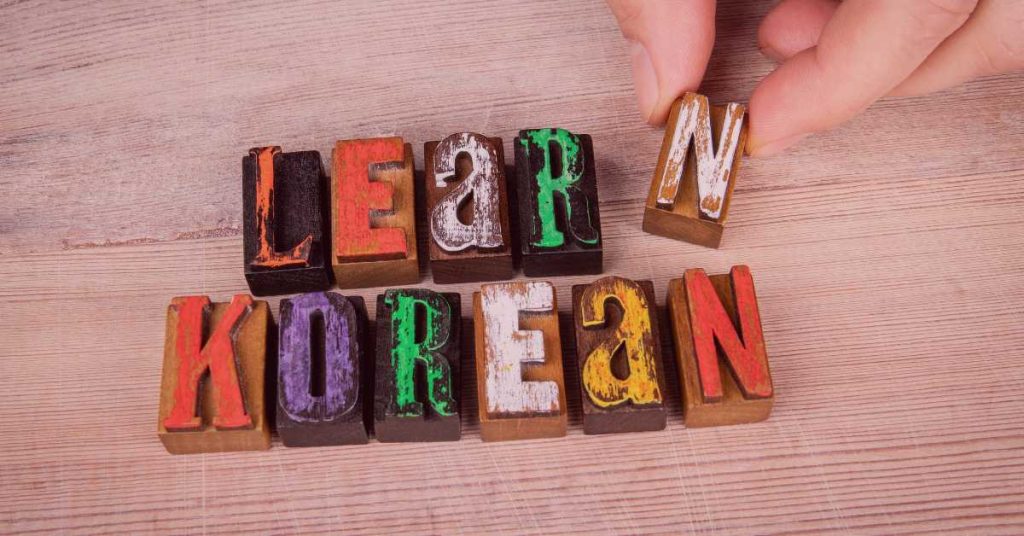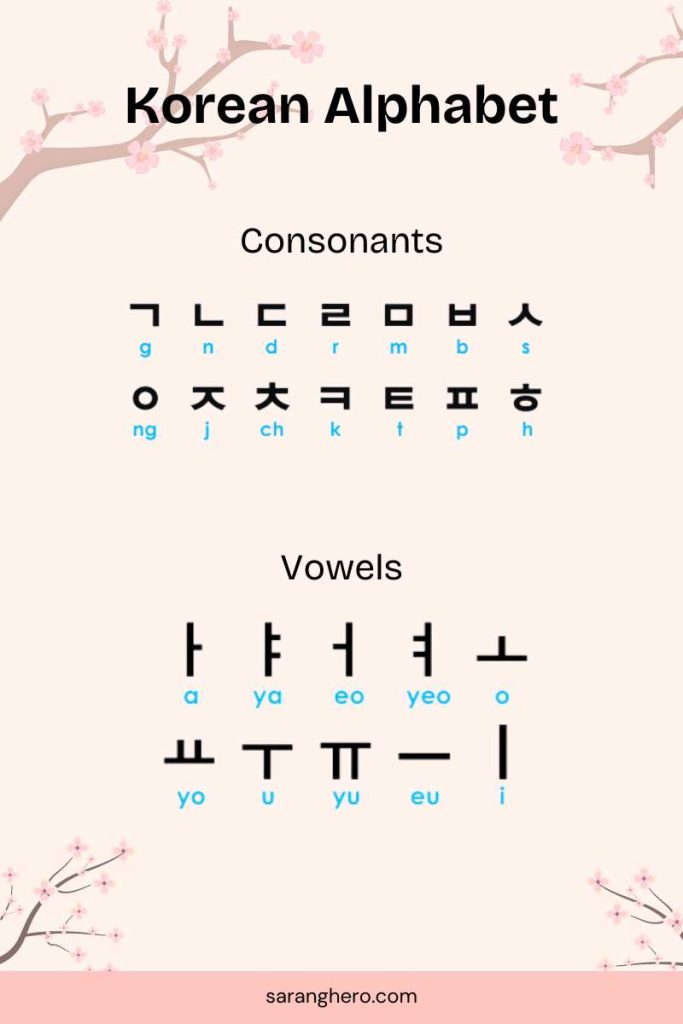
Ever dreamed of effortlessly navigating Seoul’s bustling streets, confidently ordering your favorite dish in Korean?
Do you love watching K-dramas and listening to K-pop but wish you could understand them without subtitles?
Do you dream of traveling to Korea, studying in Korea, or working with Korean clients but don’t know where to start?
You’re not alone!
A recent survey by Duolingo found that Korean is the fastest-growing language learned on their platform, with a 47% increase in learners in just the past year.
But let’s face it: between work, family, and social commitments, finding time to learn Korean fast can feel like climbing Mount Everest in flip-flops.
But what if I tell you that learning Korean doesn’t have to be an uphill battle?
Imagine the possibilities…
- Impress your friends and family by casually dropping Korean phrases into conversation.
- Boosting your career prospects by gaining an edge in a globalized job market.
- Deepen your connection to Korean culture, music, and dramas.
- Travel confidently, navigating transportation, ordering food, and making meaningful connections with locals.
Ready to ditch the flip-flops and start your Korean learning adventure? Buckle up because we’ll equip you with the ultimate toolkit for busy learners.
Foundations of Korean—Understanding The Basics

Hangul: Start With The Alphabet
Before diving into Korean grammar and vocabulary intricacies, let’s conquer the first hurdle: Hangul, the Korean alphabet. Unlike complex character-based systems like Chinese, Hangul boasts a straightforward and logical structure, making it one of the easiest alphabets to learn.
Hangul is the foundation of the Korean language; you will have difficulty progressing to the next level without it.
Hangul consists of 24 letters: 14 consonants and 10 vowels.
Here’s a basic overview of Hangul consonants and their approximate equivalents in the alphabet:
Consonants
| ㄱ (g/k) | Sounds like ‘g’ as in “go” at the beginning of a word; sounds like ‘k’ at the end of a word. |
| ㄴ (n) | Sounds like ‘n’ as in “nice.” |
| ㄷ (d/t) | Sounds like ‘d’ as in “dog” at the beginning of a word; sounds like ‘t’ at the end of a word. |
| ㄹ (r/l) | Sounds somewhere between ‘r’ and ‘l.’ It’s like the Spanish ‘r’ or the ‘l’ in “like.” |
| ㅁ (m) | Sounds like ‘m’ as in “moon.” |
| ㅂ (b/p) | Sounds like ‘b’ as in “bat” at the beginning of a word; sounds like ‘p’ at the end of a word. |
| ㅅ (s) | Sounds like ‘s’ as in “snake.” When followed by ‘ㅣ(i),’ it sounds like ‘sh.’ |
| ㅇ (ng/∅) | Silent when at the beginning of a word; sounds like ‘ng’ as in “song” at the end of a word. |
| ㅈ (j/ch) | Sounds like ‘j’ as in “juice” at the beginning of a word; sounds like ‘ch’ in “church” at the end of a word. |
| ㅊ (ch) | Sounds like ‘ch’ as in “chop.” |
| ㅋ (k) | A stronger ‘k’ sound, as in “kite.” |
| ㅌ (t) | A stronger ‘t’ sound, as in “top.” |
| ㅍ (p) | A stronger ‘p’ sound, as in “pop.” |
| ㅎ (h) | Sounds like ‘h’ as in “hat.” |
Vowels
| ㅏ (a) | Sounds like ‘a’ as in “father.” |
| ㅓ (eo) | Sounds like ‘uh’ as in “uh-oh” or ‘o’ in “song.” |
| ㅗ (o) | Sounds like ‘o’ as in “more.” |
| ㅜ (u) | Sounds like ‘oo’ as in “boot.” |
| ㅡ (eu) | Sounds like ‘eu’ in “deuce” (without the ‘d’ sound). |
| ㅣ (i) | Sounds like ‘ee’ as in “see.” |
| ㅐ (ae) | Similar to ‘a’ in “bat” or ‘e’ in “bet.” Some speakers pronounce it similar to ㅔ. |
| ㅔ (e) | Sounds like ‘e’ in “bet.” In the modern Seoul dialect, it often sounds similar to ㅐ. |
| ㅑ (ya) | This is ㅏ (a) with an added ‘y’ sound in front, like ‘ya’ in “yard.” |
| ㅕ (yeo) | This is ㅓ (eo) with an added ‘y’ sound in front, similar to ‘yeo’ in “yeoman.” |
Unlike English, where the letters are written in a linear sequence, Hangul letters are arranged in syllabic blocks, each containing one or more consonants and one or more vowels.
For example, the word for “Korea” in Korean is 한국, which is composed of two syllables: 한 (han) and 국 (guk). Each syllable has a consonant-vowel-consonant structure: ㅎ (h), ㅏ (a), and ㄴ (n) for 한, and ㄱ (g), ㅜ (u), and ㄱ (k) for 국.
Hangul is also phonetic, which means that each letter has a corresponding sound, and the combination of letters determines the pronunciation of a word. This makes Hangul easier to learn than English, where the spelling and pronunciation often do not match.
Why Master Hangul First?

Unlocks pronunciation & reading: Knowing Hangul empowers you to sound out words, read signs, and navigate basic communication even without extensive vocabulary.
Boosts confidence & motivation: The sense of accomplishment from mastering Hangul fuels your enthusiasm for further learning.
Solidifies foundation for fluency: A strong grasp of Hangul lays the groundwork for understanding grammar and vocabulary more effectively.
Learning Hangul may seem daunting at first, but it is very logical and systematic. Once you learn the basic rules and patterns, you can read and write any Korean word.
Equipped with your newfound mastery of Hangul, don’t let the momentum stop! Let’s dive into acquiring essential phrases that will empower you to navigate real-life situations in Korean.
Learn Korean Smarter, Not Harder—Top Korean Learning Strategies
Essential Phrases: Focus On Practical Phrases For Immediate Use
Textbooks often prioritize grammar structures. However, busy learners can benefit from focusing on practical phrases for immediate use. This equips you to handle everyday situations and build confidence in your spoken Korean.
What phrases to prioritize?
Greetings:
- Hello (안녕하세요, Annyeonghaseyo)
- Goodbye (안녕히 가세요, Annyeonghi gaseyo)
- Thank you (감사합니다, Gamsahamnida)
- You’re welcome (천만에요, Cheonmaneyo)
- Nice to meet you (만나서 반갑습니다, Mannaseo bangapseumnida)
Introductions:
- My name is… (저는…, Jeoneun…)
- What is your name? (이름이 뭐예요?, Ireumi mwoyeyo?)
- I’m learning Korean (저는 한국어 배우고 있습니다, Jeoneun hangugeo baeugo issumnida)
Basic needs:
- I need… (저는 필요합니다…, Jeoneun piryohamnida…)
- How much is this? (이거 얼마예요?, Igeo eolmaeyo?)
- Where is the bathroom? (화장실 어디예요?, Hwajangsil eodieyo?)
- I don’t understand (저는 이해하지 못합니다, Jeoneun ihaehaji mothhamnida)
- Could you point me to…? (저는… 어디로 가야 할까요?, Jeoneun… eodiro gaya halkkayo?)
Simple requests:
- Can you please…? (제발…, Jebal…)
- Could you repeat that? (한 번 더 말씀해 주세요, Han beon deo malsseumhae juseyo?)
- Do you speak English? (영어 할 줄 아세요?, Yeong-eo hal jul aseyo?)
- Excuse me (실례합니다, Sillyehamnida)
- I’m sorry (죄송합니다, Joesonghamnida)
- Help! (도와주세요!, Dowajuseyo!)
- I’m lost (길을 잃었습니다, Gireul ireureossumnida)
- I’m looking for… (저는…을 찾고 있습니다, Jeoneun…eul chajago issumnida)
Essential expressions:
- I love you (사랑해, Saranghae) – Use with caution, as it can be a strong term in Korean culture. Consider starting with “I like you” (좋아해, Joahae).
- Happy birthday (생일 축하합니다, Saengil chukhahahamnida)
- Mom (엄마, Eomma)
- Dad (아빠, Appa)
- Yes (네, Ne)
- No (아니요, Aniyo)
- Maybe (아마, Ama)
- Please (제발, Jebal)
- Thank you very much (정말 감사합니다, Jeongmal gamsahamnida)
- You’re welcome (천만에요, Cheonmaneyo)
- It’s delicious (맛있어요, Masisseoyo)
- I’m full (배가 찼어요, Baegachasseoyo)
- Excuse me, can I…? (실례합니다, 저는…, Sillyehamnida, jeoneun…)
But mastering essential phrases isn’t enough – busy learners like you need to be smart about your time! Let’s explore some time-saving learning tools to accelerate your progress.
Use Time-Saving Learning Tools To Learn Korean Fast

Hangul who? Hangul WOW! This alphabet is easier than you think. With a bit of fun and the right tools, you’ll master it quickly.
Here’s your personalized guide to Hangul mastery, featuring our top picks for resources:
Apps
Saranghero
Think learning has to be boring? Think again! Saranghero turns mastering Hangul into a delightful game. You’ll earn rewards through interactive exercises, quizzes, and colorful graphics, and track your progress. Bonus points for the handy blog with language and culture insights!
Duolingo
While not explicitly designed for Korean, Duolingo’s Korean course can be a helpful starting point for beginners to learn basic vocabulary and grammar structures.
LingoDeer
Go beyond just Hangul with LingoDeer’s immersive experience. This app will equip you with grammar, vocabulary, and cultural knowledge, all tailored to your goals. Explore stories, games, and review sessions while customizing your learning path for an unforgettable journey.
Drops
Feast your eyes and fuel your brain. Drench yourself in a sensory extravaganza with Drops – Visual Feast! Learn vocabulary through jaw-dropping pictures and addictively fun mini-games. It’s like playing a captivating video game, but you’re unlocking fluency in Korean, Spanish, French, or any other language you crave!
Lingopie
Lingopie isn’t just language learning. It’s an emotional immersion in authentic conversations. Learn through compelling videos on topics you love, from cooking shows to music videos, with interactive subtitles tailored to your level. Pick up natural expressions like a native, laugh with the locals, and feel the language come alive as you practice with personalized exercises. It’s the fastest way to speak like a local without leaving your couch.
Busuu
Level up like never before with your personal AI coach! No more one-size-fits-all learning. Bussuu’s cutting-edge AI analyzes your strengths and weaknesses, tailoring adaptive learning paths just for you. Enjoy gamified lessons, personalized recommendations, and real-time feedback that keeps you motivated and progressing at your own pace. It’s like having a language tutor in your pocket, cheering you on every step of the way!
Flashcard Powerhouses
Memrise
This popular language app helps you unlock the secrets of Hangul with spaced repetition and clever mnemonics. Create your own flashcards, join the active community, and watch each letter transform into a memorable image or phrase. Say goodbye to rote memorization!
Conversation Practice
Tandem
Connect with native Korean speakers for language exchange and cultural immersion. Engage in calls, messages, and video chats to practice your speaking skills and gain insights into Korean culture.
HelloTalk
Stop studying alone, start speaking confidently. Ditch the isolation and join a vibrant community of language learners and natives. Practice speaking, ask questions, and immerse yourself in authentic conversations through our diverse communication options. Break down language barriers, build cultural bridges, and unlock the world – one meaningful connection at a time.
AI-Powered Tutors
Teuida
Forget the textbook monologue! Teuida pairs you with AI tutors who use natural language processing and speech recognition to create realistic conversations. Practice Hangul and gain personalized feedback in diverse scenarios, from travel to business in diverse scenarios.
Chatbot Companion
Eggbun
Imagine having a friendly chatbot guide you through your Korean journey. Eggbun offers just that! Engage in natural conversations, receive audio and visual feedback, and access cultural tips and quizzes. Learning can be interactive and fun!
Structured Learning
KoreanClass101
KoreanClass101 offers free and paid resources, including audio and video lessons, grammar explanations, and interactive activities. Dive deep into grammar, vocabulary, and pronunciation with structured learning paths.
GO! Billy Korean
GO! Billy Korean is your perfect language partner! Billy’s humor-infused lessons cater to visual learners, auditory learners, and anyone who enjoys a good laugh. Learn essential grammar, build your vocabulary, and gain cultural insights in an engaging, effective, and unforgettable way.
Immersion & Entertainment
FluentU
FluentU transforms music videos, trailers, and inspiring talks into interactive lessons. Learn Hangul and vocabulary naturally as you watch, with subtitles, quizzes, and flashcards to solidify your understanding.
Talk to Me In Korean
Talk to Me In Korean is a trusted website that offers a treasure trove of learning resources, from free and paid courses to podcasts and videos. Connect with other learners and native speakers through their vibrant online community and soak up over a decade of expertise. Learning doesn’t get more dynamic!
HowToStudyKorean
This website dives deep into the nitty-gritty of Korean grammar and vocabulary, with detailed explanations, interactive exercises, and even a forum for connecting with other learners.
Korean Unnie
Korean Unnie offers Korean learning resources, cultural insights, and fun challenges in a visually appealing and engaging format. Enjoy aesthetically pleasing content while learning new words and phrases.
Viki
Watch Korean dramas, movies, and shows with subtitles to immerse yourself in the language and pick up natural expressions. Plus, enjoy diverse content to keep things interesting!
Netflix
Immerse yourself in Korean by watching shows and movies on Netflix with subtitles. Choose genres you enjoy, activate Korean subtitles, and pause to look up unfamiliar words. It’s a fun and engaging way to pick up natural language and improve your listening comprehension.
While some fantastic tools and resources like language learning apps and private tutors can accelerate your Korean journey, they often come with a price tag.
Learning Korean does not have to be expensive or time-consuming. There are many ways to learn Korean for free or at a low cost without compromising the quality or effectiveness of your learning.
Creative & Cost-Effective Ways to Learn Korean Fast
No time, No money? No problem! Learn Korean with free tools. These resources include
PDFs and Ebooks
You can find and download various PDFs and ebooks covering different aspects of the Korean language and culture, such as grammar, vocabulary, pronunciation, and writing. Some of the best ones are:
- Korean Grammar in Use: A series of books that explain Korean grammar clearly and systematically, with examples and exercises.
- Korean From Zero: A book that teaches you Korean from scratch, with Hangul, vocabulary, grammar, and culture lessons.
- My Korean: A book that introduces you to the basic Korean language and culture, with dialogues, grammar notes, and activities.
Worksheets and Exercises
You can find and download various worksheets and exercises that help you practice and review your Korean skills, such as reading, writing, listening, and speaking. Some of the best ones are
- Korean Worksheets: A website that offers free printable worksheets for different levels and topics, such as Hangul, numbers, colors, and verbs.
- TOPIK Guide: A website that offers free practice tests and study materials for the Test of Proficiency in Korean (TOPIK), the official Korean language exam.
Audio and Video Files
You can find and download various audio and video files that help you improve your listening and speaking skills, such as podcasts, dialogues, and songs. Some of the best ones are
- Korean Listening Practice: A website that offers free audio files and transcripts for different levels and topics, such as greetings, shopping, and travel.
- Listening Korean: A website that offers free video files and transcripts for different levels and topics, such as family, hobbies, and food.
- Korean Songs: A website that offers free songs and lyrics for different genres and artists, such as pop, rock, and ballad.
Language Exchange Platforms
You can use or join various language exchange platforms that allow you to partner with native speakers or fellow learners for mutual learning and practice. Some of the best ones are:
- HelloTalk: A popular language exchange app that lets you chat with native speakers or fellow learners in Korean or any other language. You can also use various features such as voice messages, corrections, and translations.
- Tandem: A language exchange app that matches you with native speakers or fellow learners who share your interests and goals. You can also use various features such as video calls, text messages, and games.
- Italki: A language exchange platform that connects you with native speakers or fellow learners for free or paid lessons. You can also use various features such as notebooks, articles, and questions.
Online Communities and Forums

You can use or join various online communities and forums that offer support and guidance for your Korean learning journey. You can also interact with other learners and native speakers and share your questions, tips, and resources. Some of the best ones are:
- r/Korean: A subreddit that is dedicated to learning and teaching Korean. You can also find and join various events, challenges, and study groups.
- Korean Language: A forum in the Language Learners community. You can also find and join various discussions, logs, and challenges.
Learning Korean for free or at a low cost is possible and easy as long as you have the motivation and the resources.
You can take advantage of the free resources and platforms that are available online and make your learning process fun, effective, and rewarding. You can also mix and match different resources and platforms and find the ones that suit your needs and preferences.
But don’t just scatter your efforts across a dozen different resources. While exploring various tools is crucial, it’s equally important to strategize your learning time to maximize its impact.
How to Manage Your Time to Learn Korean (Even When You’re Crazy Busy)
Here’s how you can learn Korean effectively with some time management hacks.
1. Microlearning Magic
Forget cramming! UCLA’s psychology department chair and leading expert in human learning and memory, Robert Bjork, emphasizes spaced repetition—think short, frequent study sessions—as crucial for retaining information. Utilize those dead time pockets like commutes, coffee breaks, or waiting in line.
Here’s your microlearning arsenal:
- Flashcard apps: Quizlet, Anki, Memrise – quick vocabulary drills on the go.
- Bite-sized lessons: KoreanClass101’s mini-videos,
- Talk To Me In Korean podcasts – learn grammar and culture in snippets.
- Korean news snippets: KBS News Youtube channel – practice listening comprehension with short, real-world updates.
2. Dead Time = Learning Time
“Dead time” is those little pockets of time that tend to slip through our fingers—waiting in line for coffee, commuting to work, or even during those quick lunch breaks.
An MIT study explored “wait-learning” for second languages. Their prototype, WaitChatter, displays relevant vocabulary and quizzes in instant messaging apps while users wait for replies. Participants effectively integrated this into their messaging habits, suggesting the best time for language learning is during dead time.
Believe it or not, these moments are golden opportunities for language learning. Here’s how to use them:
During Your Commute: Swap out your usual playlist for a Korean podcast or audiobook. Even if it’s just background noise at first, your brain is picking up on the rhythm and sounds of the language.
In Line for Coffee?: Whip out a flashcard app like Anki or Quizlet on your phone. A few minutes here and there add up, and soon, you’ll recognize more words and phrases.
Lunch Breaks: Dedicate at least part of your break to learning. This could be watching a short video in Korean or reviewing a few grammar rules.
3. Baby Steps, Big Results
Setting unrealistic goals is a recipe for burnout. Instead, chunk your learning into bite-sized, achievable goals. Aim for ten new vocabulary words daily, a 15-minute grammar lesson, or a conversation exchange with a native speaker on HelloTalk. Ticking off these mini-milestones will keep you motivated and seeing progress.
4. Don’t Be a One-Trick Pony.
Variety is the spice of learning (and life)! Don’t get stuck in a rut with just one app or method. Mix things up by using flashcards, listening to Korean music videos on Spotify, tuning into podcasts like Talk To Me In Korean, or joining an online community like HowToStudyKorean. This keeps things fresh and engaging and helps you learn from different angles.
5. Track Your Progress, Celebrate Your Wins
Seeing how far you’ve come can be a powerful motivator. Use a progress tracker app like Habitica, keep a learning journal, or simply celebrate your achievements with a virtual high five. A study published in the Journal of Applied Psychology found that tracking progress and celebrating milestones can significantly boost motivation and persistence.
6. Leverage Technology, But Don’t Forget the Human Touch
Technology offers amazing tools for learning Korean, but don’t underestimate the power of human interaction. Consider joining a language exchange program, finding a language partner online, or attending local Korean events.
The Development of Accuracy and Fluency in Second Language (L2) Speaking Related to Self-Efficacy Through Online Scaffolding: A Latent Growth Curve Modeling Analysis Study shows that practicing speaking with native speakers can significantly improve fluency and confidence. ️
7. Use The “Pomodoro Technique” For Focused Learning.
Channel your inner Italian tomato and conquer Korean with the Pomodoro Technique! This time-management method involves working in focused 25-minute intervals (“pomodoros”) followed by short breaks, helping you stay hyper-focused, avoid burnout, and maximize learning efficiency.
Imagine mastering Hangul in bite-sized chunks or tackling grammar points with laser focus – that’s the Pomodoro power! Give it a try and see how your Korean skills skyrocket.
Okay, time management is mastered! But how can we make Korean learning an intrinsic part of our daily lives, even with busy schedules?
The answer lies in sneaking it in cleverly through everyday activities.
Let’s explore some fun and effective ways to do just that!
Sneaking Korean into Your Daily Life—Building a Daily Learning Routine (Without Feeling Like You’re Studying!)

Let’s face it: formal study sessions sometimes feel like a chore. But what if you could learn Korean seamlessly throughout your day?
That’s where integrating Korean into your daily life comes in! It’s about making Korean a natural part of your routine, like adding a sprinkle of kimchi to your ramen.
Let’s break down some sneaky strategies:
1. Morning Mantra
Start your day with basic Korean phrases in the mirror (안녕하세요! 좋은 아침입니다!).Annyeonghaseyo! Jo-eun achim-imnida! That’s Hello! Good morning!
2. Shower Sing-Along
Ditch the shampoo jingle and belt out Korean tunes while you lather up. Find catchy K-pop songs or Korean covers of your favorite tunes. Bonus points if you practice pronunciation!
3. Label Your World
Turn your apartment into a mini-Korea! Stick Korean labels on everyday items – fridge, remote, even your toothbrush. It’s a fun way to learn vocabulary and feel like you’re living in a Korean drama.
4. Commute Chatter
Turn your commute into a Korean language exchange! Download a language learning app and connect with a native speaker. Chat about your day, practice basic phrases, or discuss the latest K-drama gossip.
5. Grocery Gamification
Grocery shopping can be a Korean adventure! Make a list in Korean, challenge yourself to find ingredients using only Korean, and practice basic conversation with the cashier.
6. Culinary Cravings:
Get creative in the kitchen! Cook Korean dishes and follow recipes in Korean. Not only will you learn new vocabulary, but you’ll also enjoy delicious food (win-win!).
7. News Break, Korean Style
Swap your usual newsfeed for a Korean one. Download a Korean news app or follow Korean news outlets on social media. You’ll stay informed and practice reading comprehension at the same time.
8. Movie Magic
Movie nights just got an upgrade! Watch Korean films with subtitles (or even try without!). Start with genres you enjoy and gradually challenge yourself. You’ll learn naturally through context and immerse yourself in the culture.
9. Social Butterfly
Join online Korean communities or groups. Chat with other learners, discuss Korean culture, or find a language exchange partner. It’s fun to practice speaking and connect with fellow Korean enthusiasts.
10. Social Media Savvy
Follow Korean YouTubers, bloggers, or Instagram accounts on topics you enjoy. This exposes you to authentic language in real-world contexts and can even spark new interests.
Once you’ve established your daily routine (don’t worry, it’s fun!), let’s unlock the next level: speaking like a native!
How to Speak Korean Like a Native: The Secrets of Immersion and Cultural Awareness

One of the best ways to learn Korean fast and easy is to immerse yourself in the language and culture. Immersion means exposing yourself to the Korean language as much as possible in various contexts and situations.
By immersing yourself in Korean, you can:
- Acquire natural and authentic language: You will learn how Koreans speak and write, not just what textbooks or grammar rules tell you. You will also learn slang, idioms, expressions, and nuances that are essential for effective communication.
- Develop your listening and speaking skills: You will train your ears to recognize and understand different accents, tones, and speech speeds. You will also practice your pronunciation, intonation, and fluency by mimicking and repeating what you hear.
- Expand your vocabulary and grammar: You will encounter new words and phrases that are relevant and useful for your needs and interests. You will also learn to use them in context and in different grammatical structures.
- Enhance your cultural awareness and appreciation: You will learn about the history, traditions, values, and customs of Korea and its people. You will also learn to respect and adhere to Korean society’s social norms and etiquette.
Depending on your level, goals, and preferences, there are many ways to immerse yourself in Korean.
Some of the most effective and enjoyable methods are:
K-Drama Enthusiasts
If you are a fan of Korean dramas or K-dramas, then you have a great advantage in learning Korean. K-dramas are not only entertaining and addictive but also educational and informative. By watching K-dramas, you can:
- Observe details: You can notice the subtle language nuances used in different situations and emotions. You can also learn how to use body language, gestures, and facial expressions to convey meaning and intention.
- Connect with characters: You can feel a deeper emotional engagement with the characters and their stories. You can also relate to their struggles, challenges, and achievements, and learn from their experiences and perspectives.
- Experience raw emotion: You can appreciate the depth and intensity of the emotions portrayed in the dramas. You can also learn how to express your feelings and opinions in Korean, and how to respond to others’ emotions.
- Appreciate culture: You can enhance your understanding of Korean culture and its diversity. You can also learn about the historical, political, social, and economic aspects of Korea and how they influence the lives of the people.
How To Learn Korean Through K-Dramas?

- Choose a suitable drama: Pick a drama that matches your level, interest, and genre. You can also choose a drama that has a theme or topic that you want to learn more about, such as romance, comedy, action, thriller, fantasy, or historical.
- Watch with subtitles: Start by watching the drama with subtitles in your native language or English. This will help you follow the plot and understand the main points. You can also pause, rewind, or replay the scenes that you find difficult or interesting.
- Watch without subtitles: Once you are familiar with the drama and its vocabulary, watch it again without subtitles. This will challenge your listening and comprehension skills, and force you to focus on the Korean language. You can also use the Korean subtitles if available, to help you read and write the words and phrases that you hear.
- Take notes: While watching the drama, write down the words, phrases, expressions, and grammar points that you want to learn or review. You can also use a dictionary or a translator app to look up the meanings and pronunciations of the words that you don’t know.
- Practice speaking: Try to imitate and repeat what the actors say in the drama. Pay attention to their pronunciation, intonation, and emotion. You can also record yourself and compare your speech with the original. You can also practice with a friend, a language partner, or an AI tutor, and have a conversation based on the drama.
Engage with Media
Another way to immerse yourself in Korean is to engage with various forms of Korean media, such as music, movies, news, podcasts, and books. By engaging with Korean media, you can:
- Improve your listening and comprehension skills: You can expose yourself to different types of content, styles, and formats of speech. You can also learn how to understand different topics, contexts, and perspectives in Korean.
- Expand your vocabulary and grammar: You can encounter new and diverse words and phrases that are used in different fields and domains. You can also learn how to use them in different sentences and structures.
- Enjoy content variety: You can access a wide range of Korean media that suits your taste and preferences. You can also discover new and interesting content that you might not have known before.
- Learn about current affairs and trends: You can keep up with the latest news and events in Korea and around the world. You can also learn about the popular and emerging trends in Korean culture and society.
How To Learn Korean Through Media?

Choose a suitable media: Pick a media that matches your level, interest, and purpose. You can also choose a media that has a format or length that you can handle, such as short or long, audio or video, or text or image.
- Use subtitles or captions: If available, use subtitles or captions in your native language or English to help you understand the content. You can also use Korean subtitles or captions to help you read and write the words and phrases that you hear.
- Use online tools: Use online tools such as dictionaries, translators, or annotators to help you look up the meanings and pronunciations of the words and phrases that you don’t know. You can also use online tools such as quizzes, flashcards, or games to help you review and practice what you learned.
- Practice speaking: Try to imitate and repeat what you hear in the media. Pay attention to the pronunciation, intonation, and emotion. You can also record yourself and compare your speech with the original. You can also practice with a friend, a language partner, or an AI tutor and have a conversation based on the media.
Some examples of Korean media that you can use to learn Korean are:
- Music
Korean music, or K-pop, is one of the most popular and influential forms of media in the world. K-pop offers a variety of genres, styles, and artists that appeal to different audiences and tastes.
You can listen to K-pop songs and learn the lyrics, meanings, and expressions that are used in them. You can also watch K-pop music videos and learn the choreography, gestures, and outfits that are part of the K-pop culture.
Some of the most famous and popular K-pop groups are BTS, Blackpink, EXO, Twice, and Red Velvet.
- Movies
Korean movies, or K-movies, are another form of media that showcases the creativity and diversity of Korean cinema. K-movies offer a range of genres, themes, and stories that reflect the reality and fantasy of Korean society.
You can watch K-movies and learn the dialogues, plots, and characters that are used in them. You can also watch K-movies and learn the cinematography, editing, and effects that are part of the K-movie industry.
Some of the most acclaimed and successful K-movies are Parasite, Train to Busan, Oldboy, The Handmaiden, and The Host.
- News
Korean news, or K-news, is a form of media that provides the latest and most relevant information and updates on Korea and the world. K-news covers a variety of topics, such as politics, economy, culture, sports, and entertainment.
You can watch or read K-news and learn the facts, opinions, and issues discussed in them. You can also watch or read K-news and learn the vocabulary, grammar, and style used in formal and journalistic Korean.
Some of the most reliable and reputable K-news sources are KBS, MBC, SBS, Yonhap, and Chosun.
- Podcasts
Korean podcasts, or K-podcasts, are a form of media that offers audio content on various topics and interests. K-podcasts are convenient and accessible, as you can listen to them anytime and anywhere, such as on your phone, computer, or car.
You can listen to K-podcasts and learn about their conversations, discussions, and interviews. You can also listen to K-podcasts and learn the pronunciation, intonation, and emotion used in casual and informal Korean.
The most popular and valuable K-podcasts are KoreanClass101, SpongeMind, Iyagi, TTMIK, and K-Pop Daebak.
- Books
Korean books, or K-books, are a form of media that offers written content on various subjects and genres. K-books are challenging and rewarding, as they require high reading and comprehension skills.
You can read K-books and learn the stories, messages, and meanings they convey. You can also read K-books and learn the vocabulary, grammar, and structure used in literary and academic Korean.
Some of the most famous and influential K-books are The Vegetarian, Please Look After Mom, Pachinko, Human Acts, and The Hen Who Dreamed She Could Fly.
K-Pop to Kimchi: Sprint Your Way to Korean Fluency (Without the Burnout!)
Learning Korean doesn’t have to be a marathon – it can be a sprint towards exciting new opportunities! Remember, the key lies in innovative strategies, engaging tools, and consistent practice.
Master Hangul, focus on daily essentials, embrace microlearning, and infuse Korean into your life. You’ll be surprised at how quickly you progress with the right approach.
Don’t let the “FAST” in the title fool you. While focused learning can accelerate your progress, enjoyment, and consistency are the secret weapons. So, ditch the fear, embrace the fun, and take that first step!